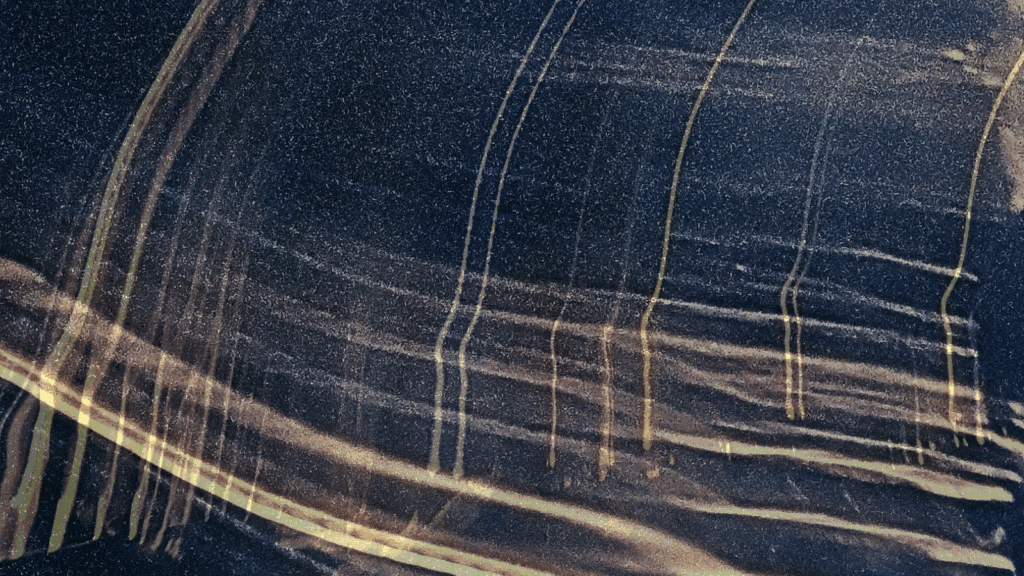Do you notice connections between unlikely things?

One of the defining traits of sensory processing sensitivity is being sensitive to subtleties. This might mean a highly sensitive person notices fine details and slight changes others miss. But it is also like having a radar scanning quietly in the background, recognising patterns and picking up faint signals beneath the surface.
This sensitivity is not necessarily about actively hunting for connections and patterns. They often appear on their own. Maybe this is true for you. You might notice how a friend’s face changes whenever a certain topic comes up. Or how two unrelated news stories seem to echo each other. Or how history has a way of reappearing, but wearing a slightly different costume. It can also happen through creative processes, smushing together things you’ve forgotten you remember.
Sometimes something grabs your attention because of an inexplicable cross-reference you cannot quite pin down, let alone explain. Making sense of these patterns can a long time.
This is where we might consider the difference between experimental and conceptual ways of thinking. Conceptual thinkers start with the destination in mind and map out the steps to get there. Experimental thinkers, and I know many highly sensitive people fall into this group, move forward without knowing where they will end up, letting patterns and meaning emerge along the way.
If the question “where do you see yourself in 5 years time” feels like an impossible one to answer, it might not be because you aren’t letting yourself dream big enough. It might be because your natural approach to meaning-making is more fluid and iterative. In other words, a 5 year plan is more of a prison than a map.
It’s the thought that counts
We explored this saying in our August Phrase Maze. We talked about when a “thought” becomes a path to follow, and how, if we give it space, the shape of that path slowly reveals itself. Without that space, we only get the first flash. We might notice a dot or two, but never discover what could connect them.
I remember this frustration from group projects at school. By the time I had begun noticing the patterns in what we were doing, the destination had already been set. The work would be completed in the most apparent, first-thought way. Without time, many potential connections are never made, and we don’t have chance to ask “where else could we go with this?” This puts the brakes on creative thinking.
When patterns meet speed
I thought of this recently while listening to Richard Osman on The Rest is Entertainment podcast. He mentioned the generative-AI-made film Midnight Drop and referenced predictions that within a couple of years, most social media videos, ads, and trailers will be largely AI-assisted, to the point where you could have an movie idea at breakfast and premier it after lunch.
It’s a fair prediction based on where we are now. It feels like the direction we’re heading. But it raises an interesting question about the role of time in the creative process.
For humans, pattern recognition is slower and stranger. We can connect ideas that seem unrelated, and those connections can keep evolving, bridging, and integrating. But that kind of recognition requires meandering time.
Finding Patterns along the experimental path
When you take a conceptual approach, you start with a precise aim. AI is designed to help us reach the destination quickly and directly.
Experimental work is slightly different. The meaning emerges through wrong turns, odd triggers, and quiet echoes between unrelated events. The final piece often looks nothing like the seed that started it.
Slow coaching for sensing subtle patterns
This is why I think speed-driven coaching models are not universally appropriate or useful. Performance coaching often prioritises efficiency (get from “here” to “there” more quickly). That is fine for simple, conceptual goals. If you know exactly what you want (where “there” is), an AI can take you through the process and lead you to a solid map to follow.
The conceptual goal is the most important element of this type of coaching. But what I’ve seen time and again when working with highly sensitive people over the years is they might discover that the thing they thought they wanted isn’t actually theirs. It’s inherited. Borrowed. Picked up from the loudest voices in society. And with the wrong kind of coaching, they race further from where they would choose to go if they had time to think, process, and notice more deeply.
Slowing down opens space between the notes, letting us notice patterns in our thinking, choices, and desires, and explore what might be possible. It is not about waiting passively. It is about acting in ways that invite reflection and learning, even when the path seems indirect. And the irony is, by slowing down, you can move more quickly on the things that compel you.
Choosing the right pace
Speed clearly has a place. But if we try to force human pattern recognition into the “breakfast idea, lunch launch” model, we lose the depth that comes when meaning emerges in its own time. Speed is a tool we can use when appropriate rather than the ideal to aim for as it so often is these days.
Maybe a better question than “how can I do this faster?” is “what could be made possible if I gave it more time?” And “what will I lose if I do this quickly?”



